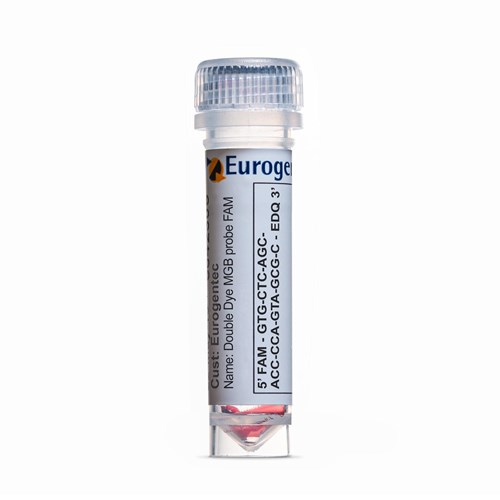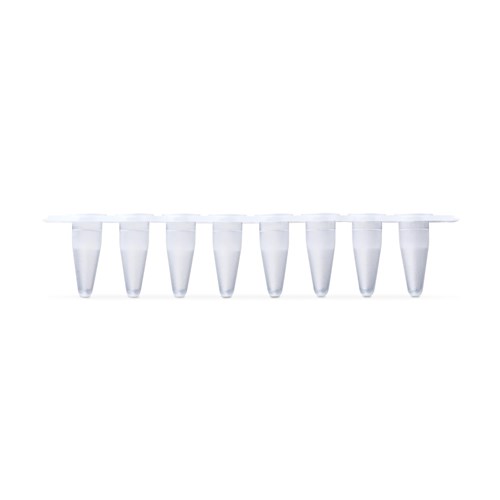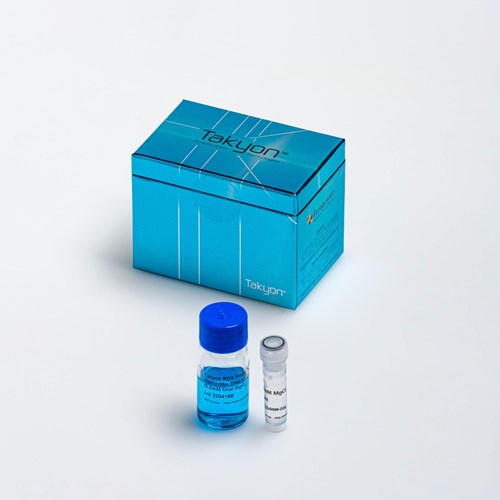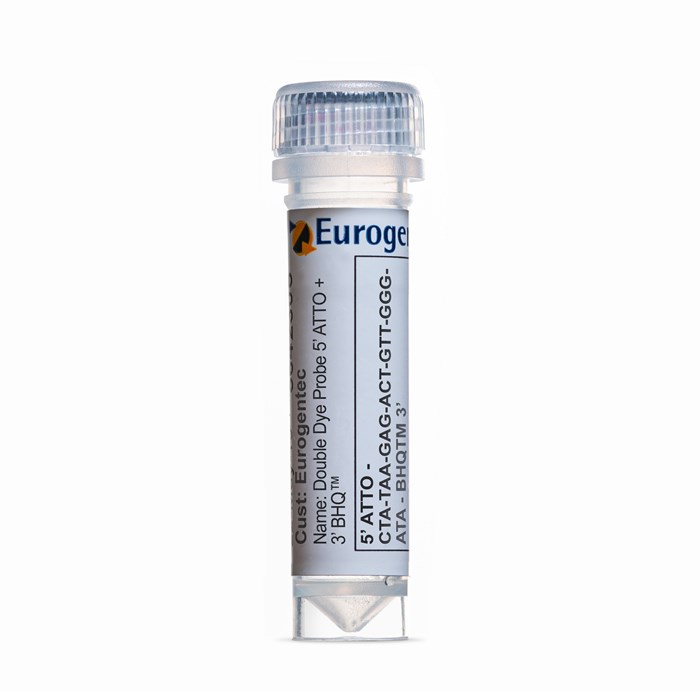We use cookies to offer you the best experience on our site. You can find out more about the cookies we use or disable them in the Cookie settings
DD Probe 5' ATTO 3' BHQ® - 1 probe
- Cat.Number : PB-DD690-004
- Manufacturer Ref. :
-
Availability :
In production
Eurogentec is a supplier of Double-Dye Oligonucleotide probes and offers the largest number of fluorescent reporters and quenchers. Double-Dye Oligonucleotide probes with various non-fluorescent quenchers and a variety of fluorescent dyes can be conveniently ordered using our web ordering interface. Furthermore, as many applications, like genotyping or gene expression profiling, are requiring small amounts of several different probes, Eurogentec has developed a high-throughput platform to produce high quality small scale Real-Time qPCR Double-Dye probes.
LNA® Double Dye probes
LNA® bases have a modification to the ribose backbone that locks the base in the C3’-endo position. Compared to DNA Double-Dye probes, LNA® Double-Dye probes exhibit higher thermal stabilities, specificity and reproducibility. They show better mismatch discrimination which allows the use of shorter probes. Furthermore, LNA® offers the possibility to adjust Tm values of primers and probes in multiplex assays.
What you have to know about your double-dye probe
All Double-Dye Oligonucleotides are HPLC purified. They are controlled by analytical HPLC and MALDI-TOF Mass Spectrometry. Double-Dye Oligonucleotides are provided lyophilized in individual 2 mL tubes. Higher scales from 2.5 µmol may be delivered in 50mL tubes. The optimal recommended length of Double-Dye Oligonucleotide probes is 25 bases. The maximum length of Double-Dye Oligonucleotides is 35 bases. In case of extra long Double-Dye Oligonucleotides probes are required, quenchers like Black Hole Quencher®, Deep Dark Quencher I and TAMRA can be coupled internally.
How do the double-dye probes work?
Double-Dye Oligonucleotides have a fluorescent reporter dye and a quencher at their 5’ and 3’ ends, respectively.
Double-Dye Oligonucleotides are designed to anneal between the upstream and downstream PCR primers. The Tm of the Double-Dye Oligonucleotide probe must be higher than the upstream primer, to avoid that the later primer is already being extended while the Double-Dye Oligonucleotide probe is not yet annealed.
During the amplification process, the 5’-> 3’ exonuclease activity of the Taq DNA polymerase cleaves the fluorophore from the probe. Since the fluorophore is no longer subjected to FRET quenching, it starts to fluoresce. This fluorescence can be measured, and the level is directly proportional to the amount of target DNA accumulating during the PCR reaction.
ATTO 390 - Absorbance = 390 nm, Emission = 479 nm
ATTO 425 - Absorbance = 436 nm, Emission = 484 nm
ATTO 465 - Absorbance = 453 nm, Emission = 508 nm
ATTO 488 - Absorbance = 501 nm, Emission = 523 nm
ATTO 495 - Absorbance = 495 nm, Emission = 527 nm
ATTO 520 - Absorbance = 516 nm, Emission = 538 nm
ATTO 532 - Absorbance = 532 nm, Emission = 553 nm
ATTO 550 - Absorbance = 554 nm, Emission = 576 nm
ATTO 565 - Absorbance = 563 nm, Emission = 592 nm
ATTO 590 - Absorbance = 594 nm, Emission = 624 nm
ATTO 594 - Absorbance = 601 nm, Emission = 627 nm
ATTO 610 - Absorbance = 615 nm, Emission = 634 nm
ATTO 620 - Absorbance = 619 nm, Emission = 643 nm
ATTO 633 - Absorbance = 629 nm, Emission = 653 nm
ATTO 637 - Absorbance = 635 nm, Emission = 659 nm
ATTO 647N - Absorbance = 644 nm, Emission = 669 nm
ATTO 655 - Absorbance = 663 nm, Emission = 684 nm
ATTO 680 - Absorbance = 680 nm, Emission = 700 nm
ATTO 700 - Absorbance = 700 nm, Emission = 719 nm
ATTO 725 - Absorbance = 729 nm, Emission = 752 nm
ATTO 740 - Absorbance = 740 nm, Emission = 764 nm
BHQ-0™ : Quenching range [430-520]nm; Max : 495 nm
BHQ-1™ : Quenching range [480-580]nm; Max : 534 nm
BHQ-2™: Quenching Range [550-650]nm; Max : 579 nm
BHQ-3™: Quenching Range [620-730]nm; Max : 680 nm
Specifications
| Modification | |
| Post Synthesis Coupling |
|
|---|---|
| Quantity & Purity | |
| Purification Method |
|
| Storage & stability | |
| Form |
|
| Resuspension condition |
|
| Storage Conditions |
|
| Activity | |
| Usage |
|
| Codes | |
| Code Nacres |
|
You may also be interested in the following product(s)



